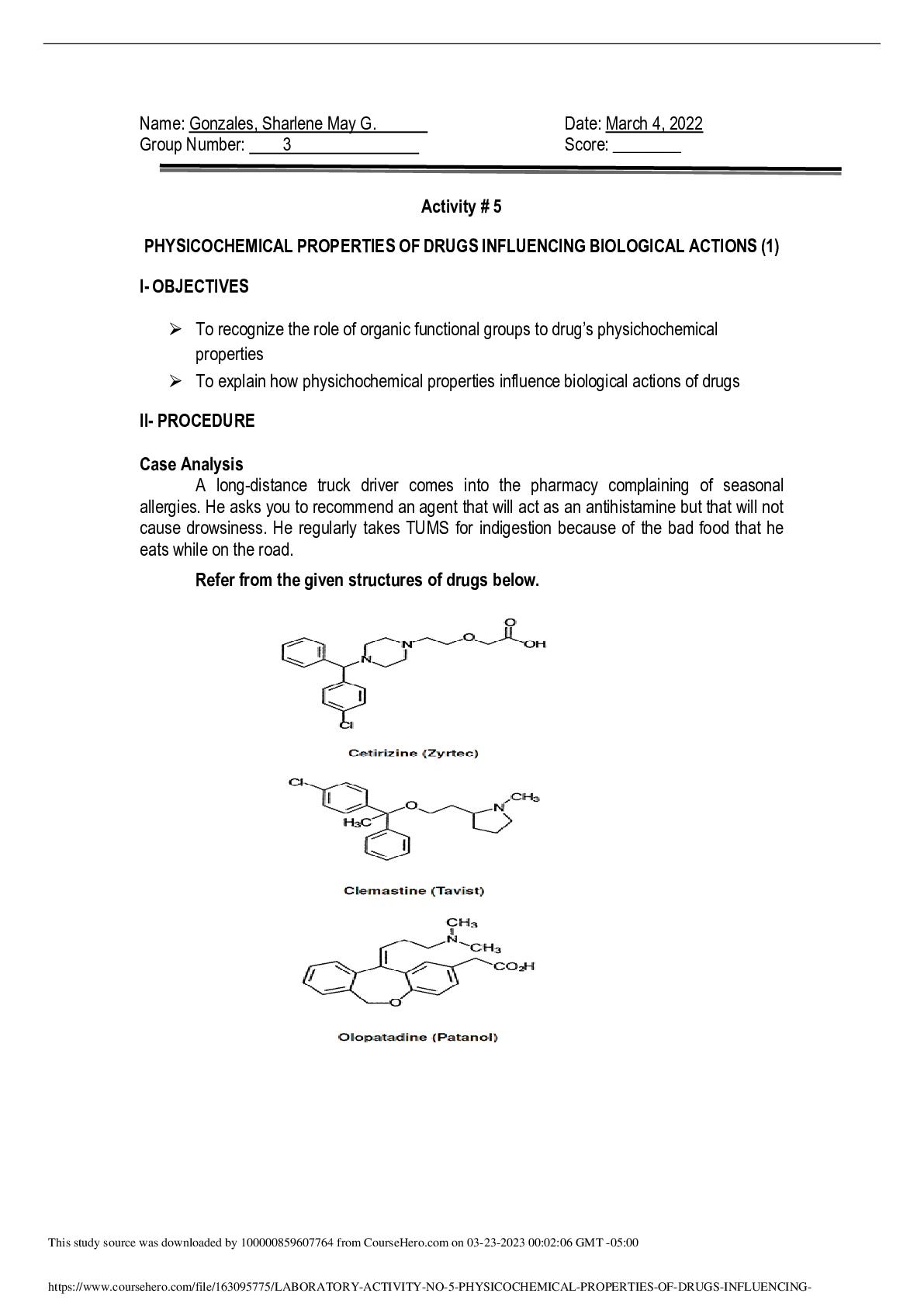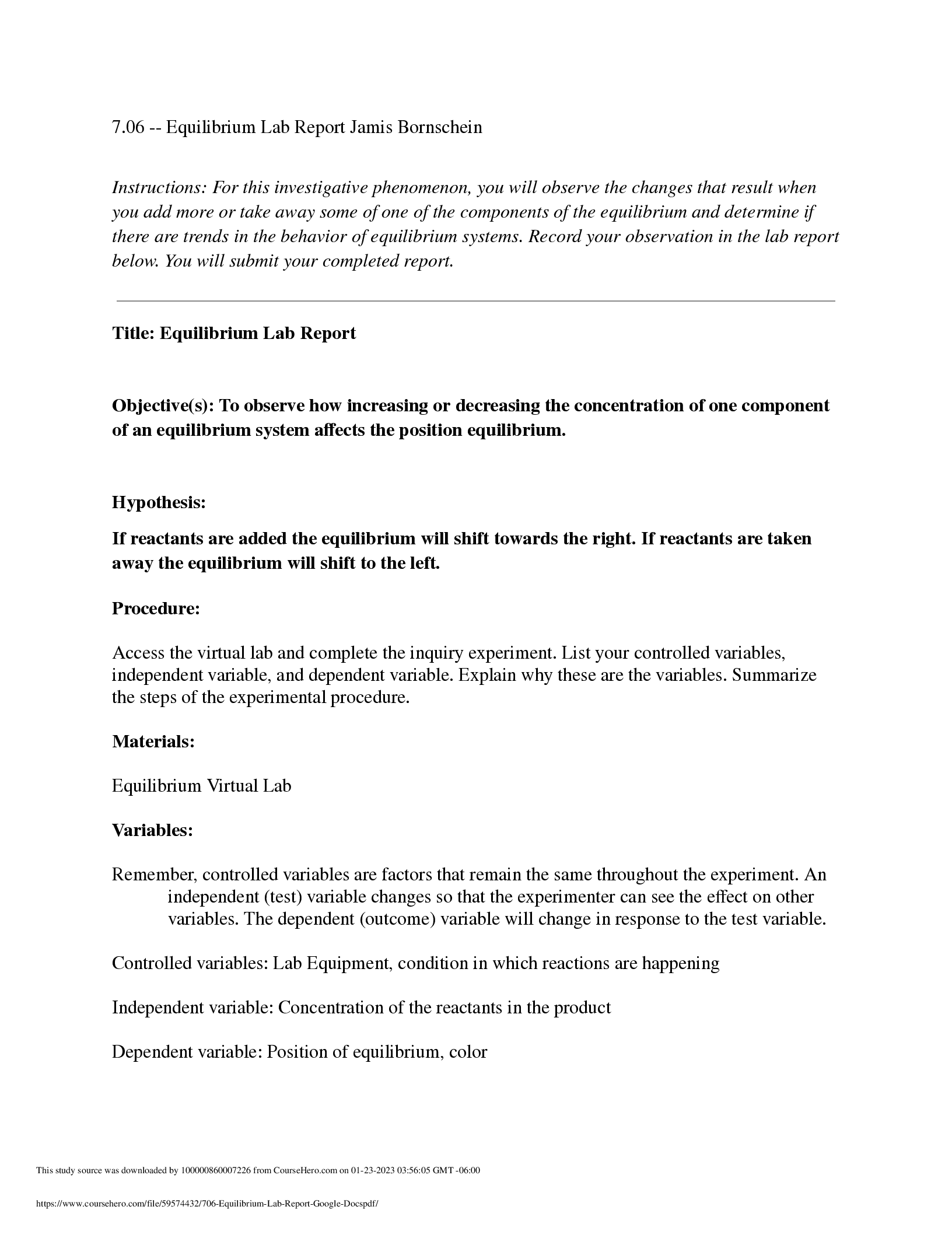Biology > Lab Report > University of California, IrvineBIO SCIBIO SCI m 118lLab Report (All)
University of California, IrvineBIO SCIBIO SCI m 118lLab Report
Document Content and Description Below
Resistance of Pseudomonas Bacteria to Various Antibiotics Introduction The first antibiotic, penicillin, was discovered by Alexander Fleming in 1928. This revolutionary breakthrough began the era o... f antibiotics. Antibiotics are crucial in the prevention and treatment of infectious diseases caused by bacteria. They allow for safe surgeries and successful recoveries, as the risk of surgical-wound infections can be prevented. Antibiotics protect against bacterial infections by either facilitating cell death or by inhibiting cell growth, which is achieved through inhibiting the synthesis of DNA, RNA, cell wall, or proteins in the bacteria (Kohanski 2010). However, with the rise of antibiotic resistance, bacterial infections are once again a concerning problem in modern medicine. Studies have shown that antibiotic consumption has a direct relationship with the emergence of bacteria that show antibiotic resistance (Ventola 2015). The misuse and overuse, in addition to scarce production of new antibiotics contribute to the spread of resistance. There are several mechanisms by which bacteria can accomplish resistance to antibiotics: altering the target site of the antibiotic, creating “bypass” pathways, preventing penetration of the antibiotic and/or facilitating antibiotic efflux, and inducing enzymatic inactivation or modification (Hawkey 1998). The pathogen Pseudomonas aeruginosa is known to have a rapid development of resistance to a number of classes of antibiotics and is especially difficult to treat as they can develop resistance during the course of infection treatment (Lister 2009). Pseudomonas is a genus of Gram-negative bacteria widely found in our environment such as in soil, in plants, and in water. The purpose of this experiment is to study the resistance of the Pseudomonas bacteria to various antibiotics using the Kirby-Bauer test. The Kirby-Bauer test is a method for determining whether a species of bacteria is susceptible or resistant to various antibiotics. Disks, each containing an antibiotic, is placed on a lawn of bacteria. After incubation, if the bacteria are susceptible to the antibiotic, there will be a ring (zone of inhibition) containing no bacteria around the disk. If the bacteria are resistant to the antibiotic, then we should still see bacteria growth next to the disk. Results To assess the degree of resistance the Pseudomonas isolate has to antibiotics, a lawn of the bacteria was subjected to the Kirby-Bauer test. For this study, a sample of bacteria was obtained from soil of an unknown source. Resistance or susceptibility of the isolate to each antibiotic is determined by measuring the diameter of the zone of inhibition surrounding each antibiotic disk, which is the region between the antibiotic disk and the lawn of bacteria where no growth is observed. [Show More]
Last updated: 1 year ago
Preview 1 out of 7 pages

Reviews( 0 )
Document information
Connected school, study & course
About the document
Uploaded On
May 02, 2021
Number of pages
7
Written in
Additional information
This document has been written for:
Uploaded
May 02, 2021
Downloads
0
Views
45

 (1).png)

.png)

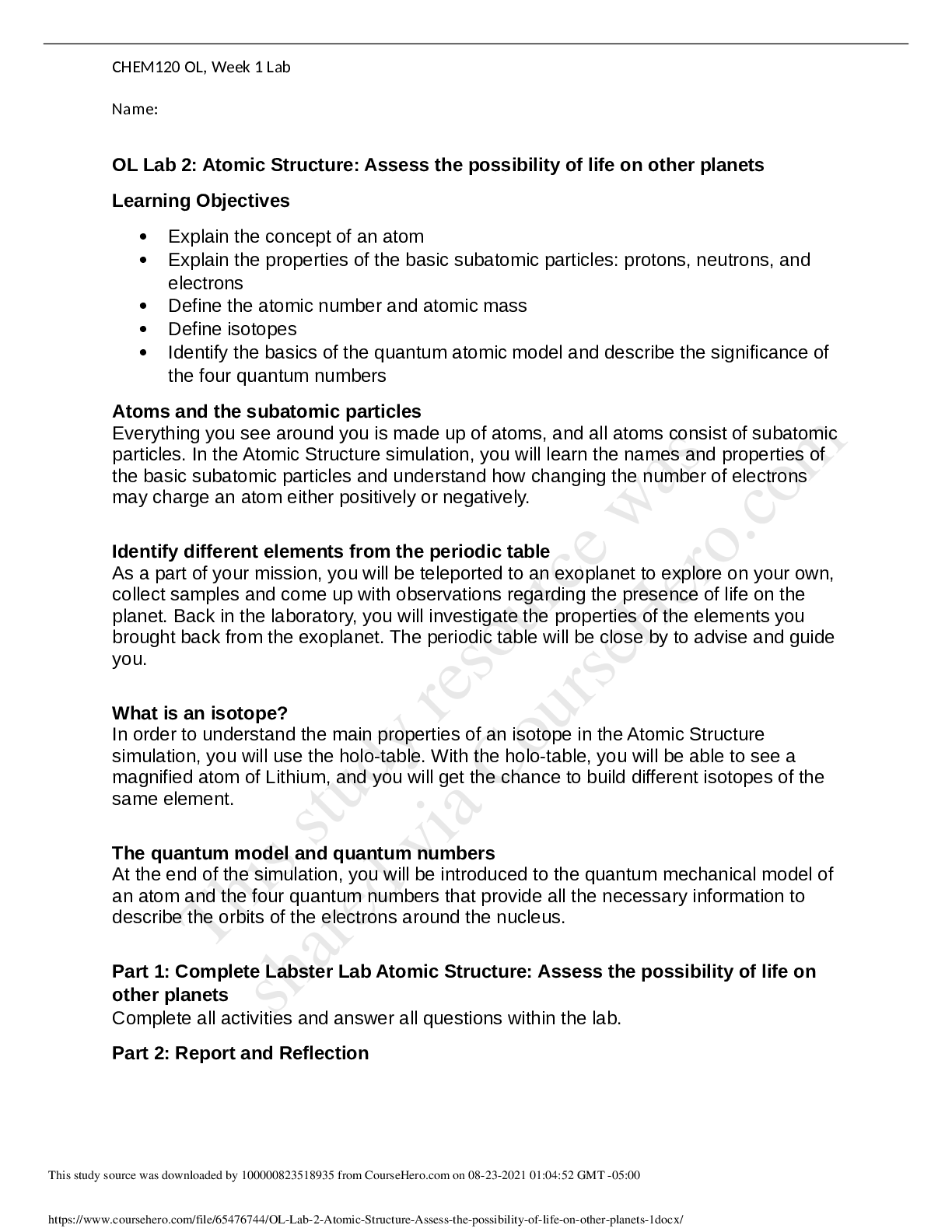



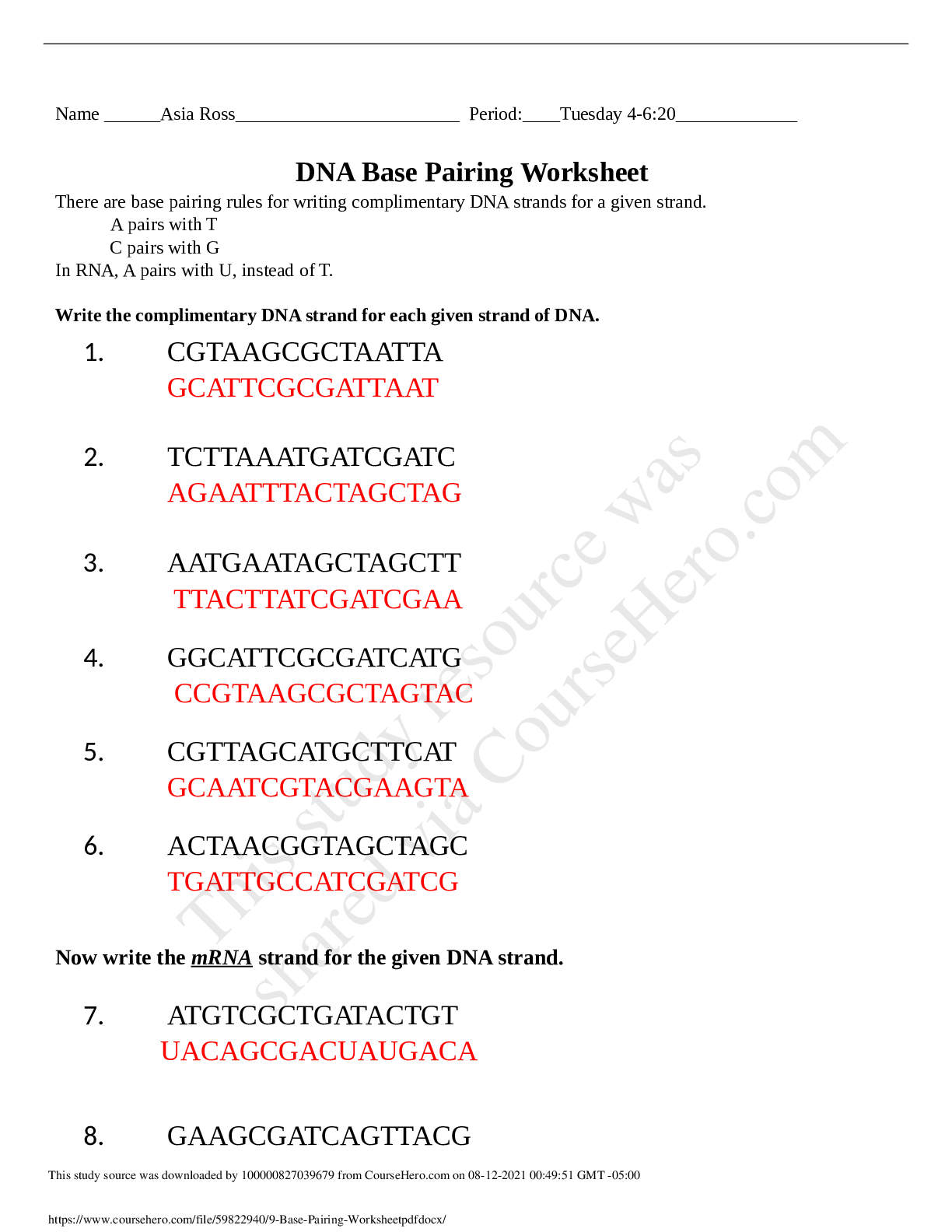
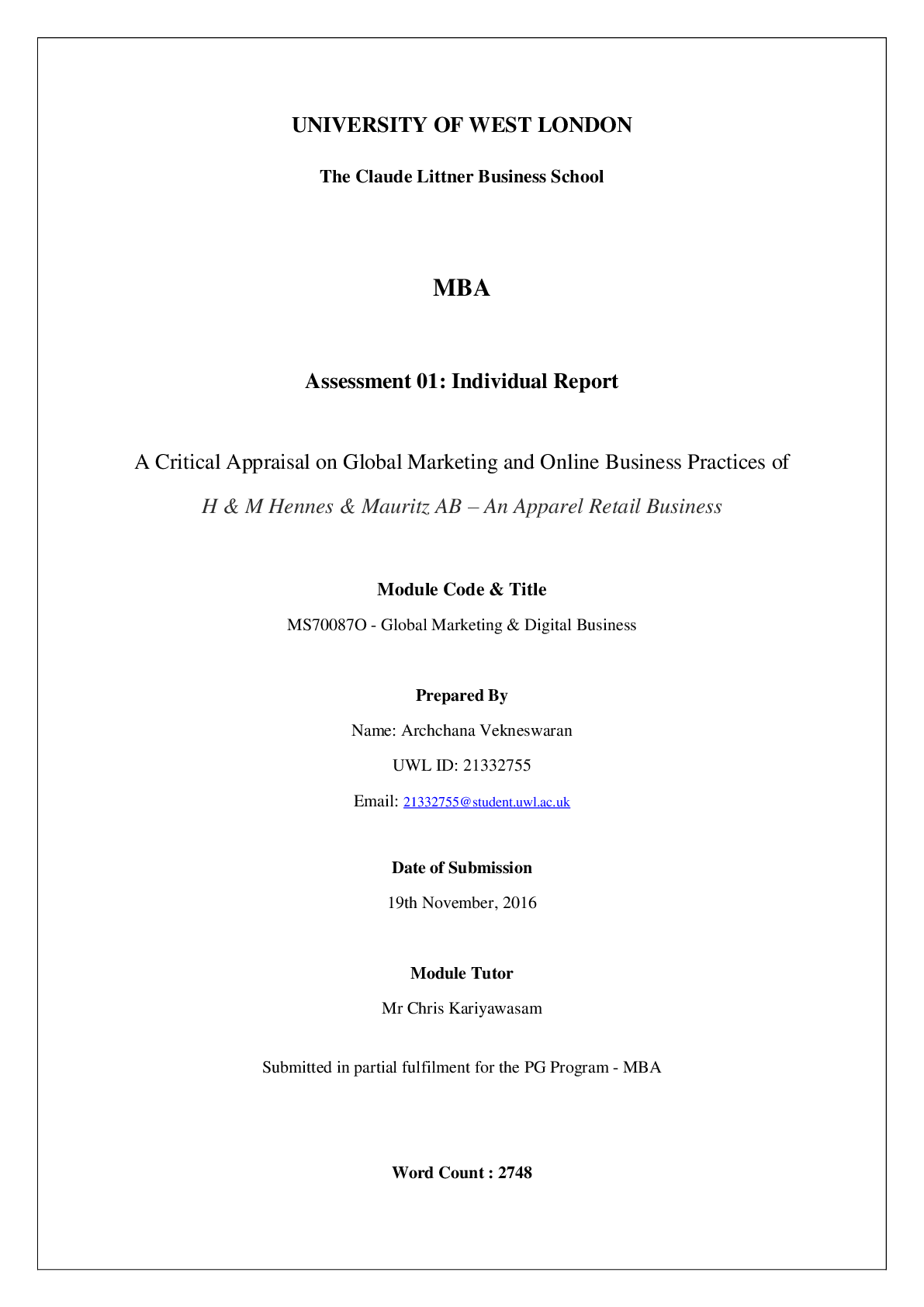


.png)
.png)

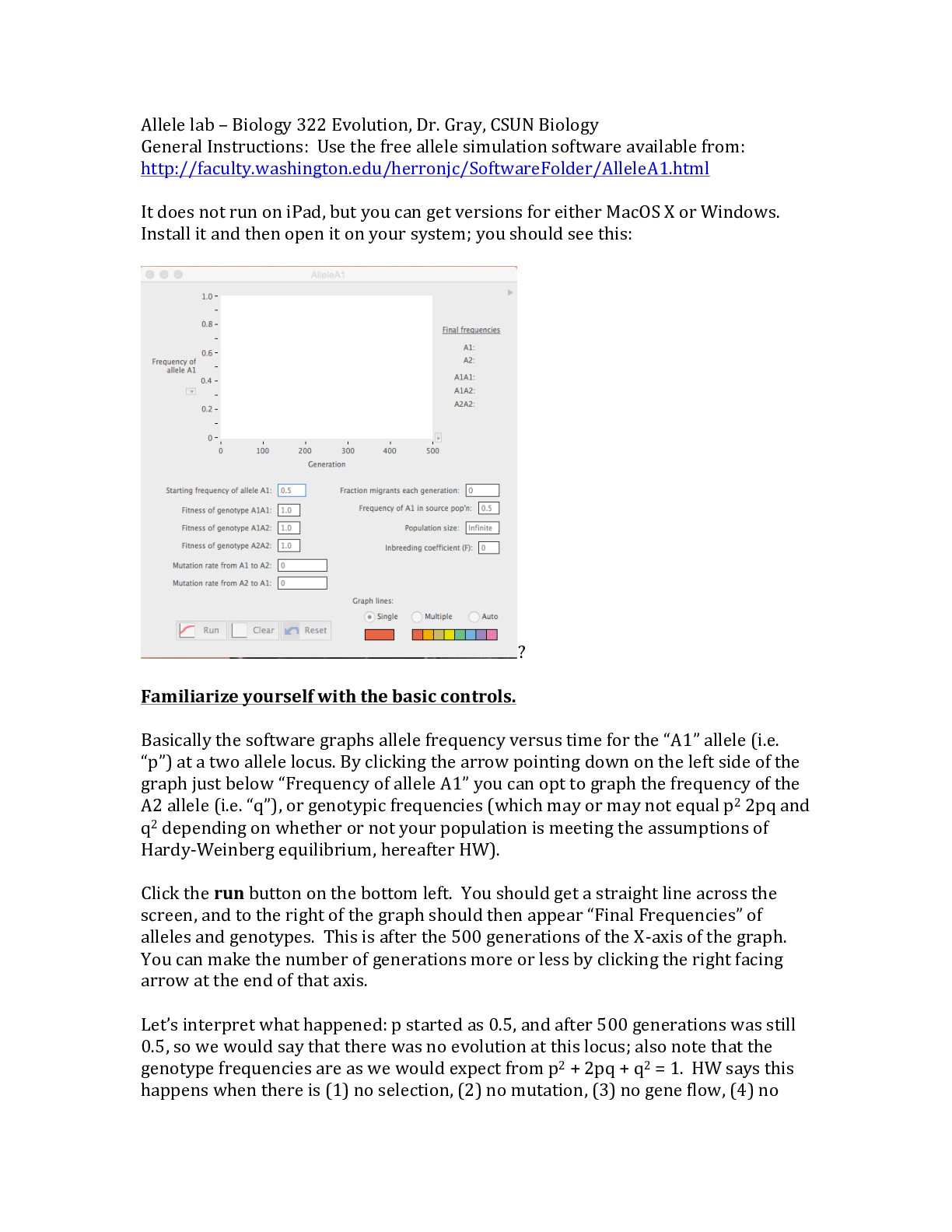

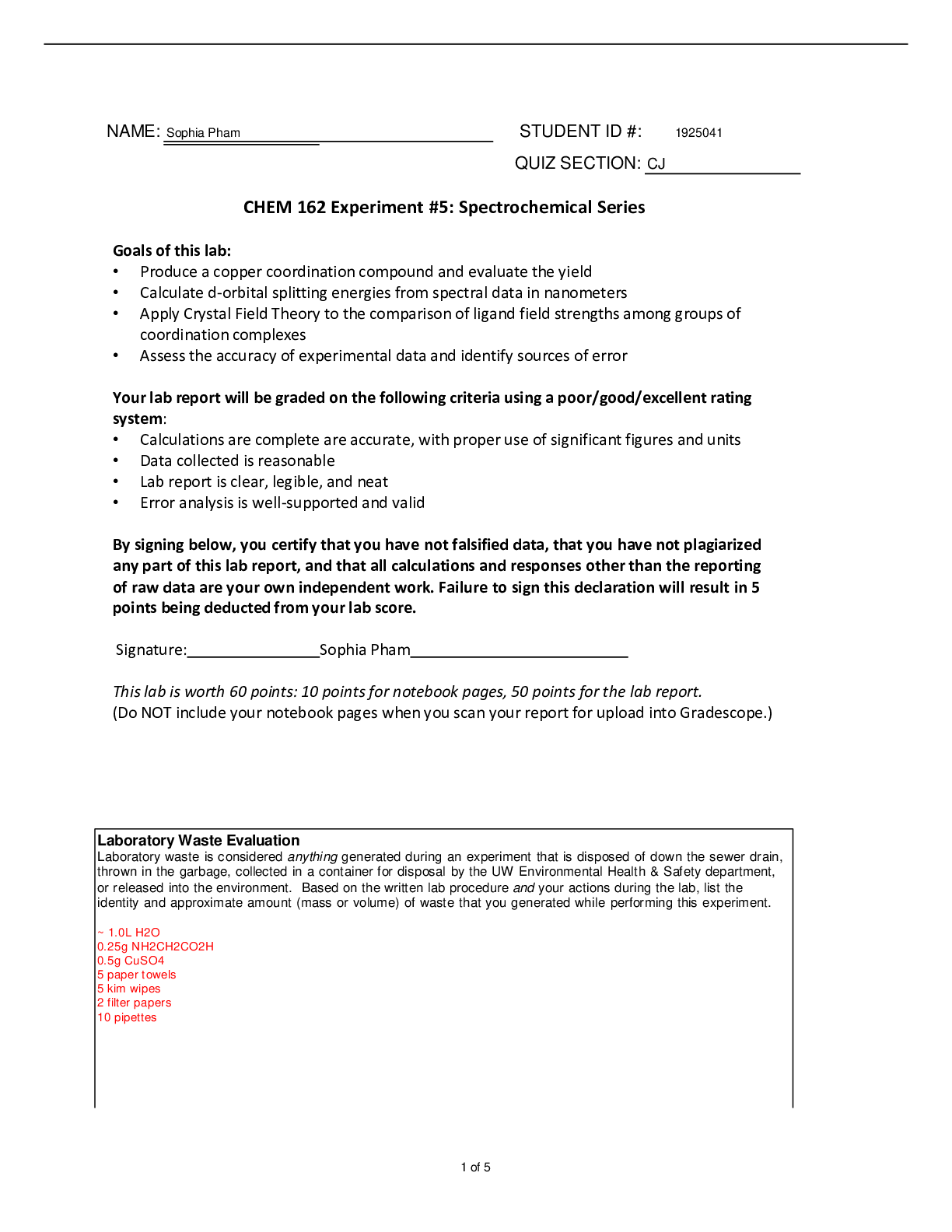
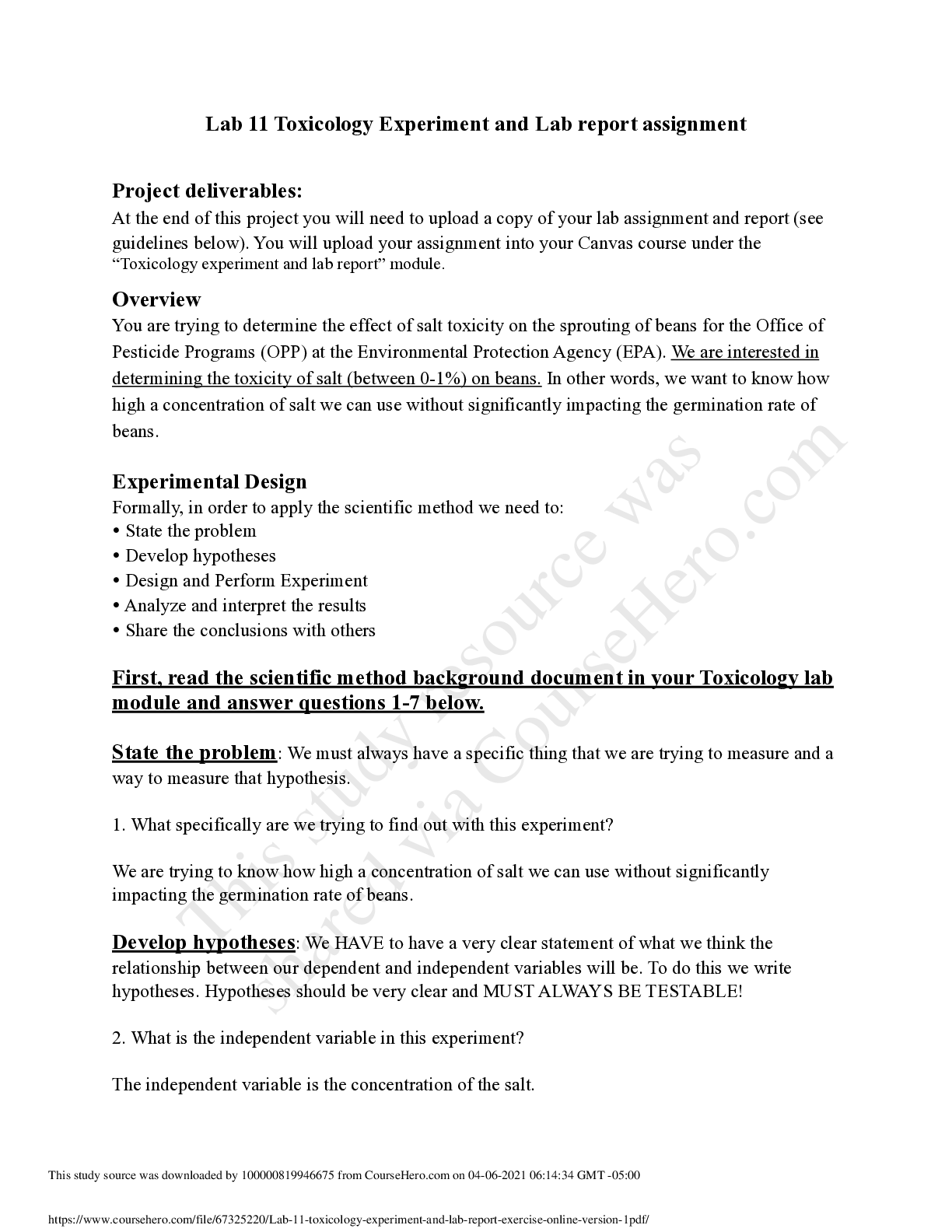
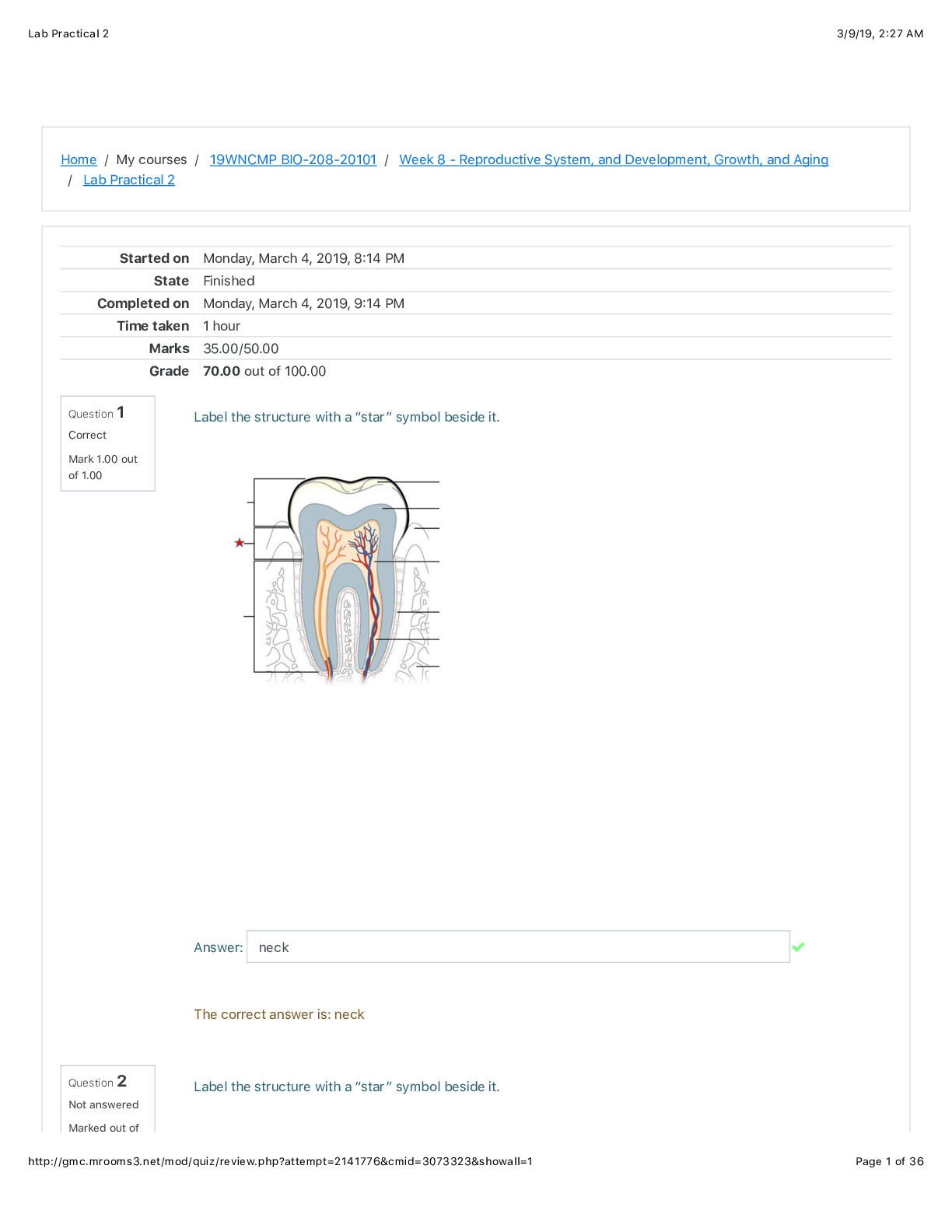



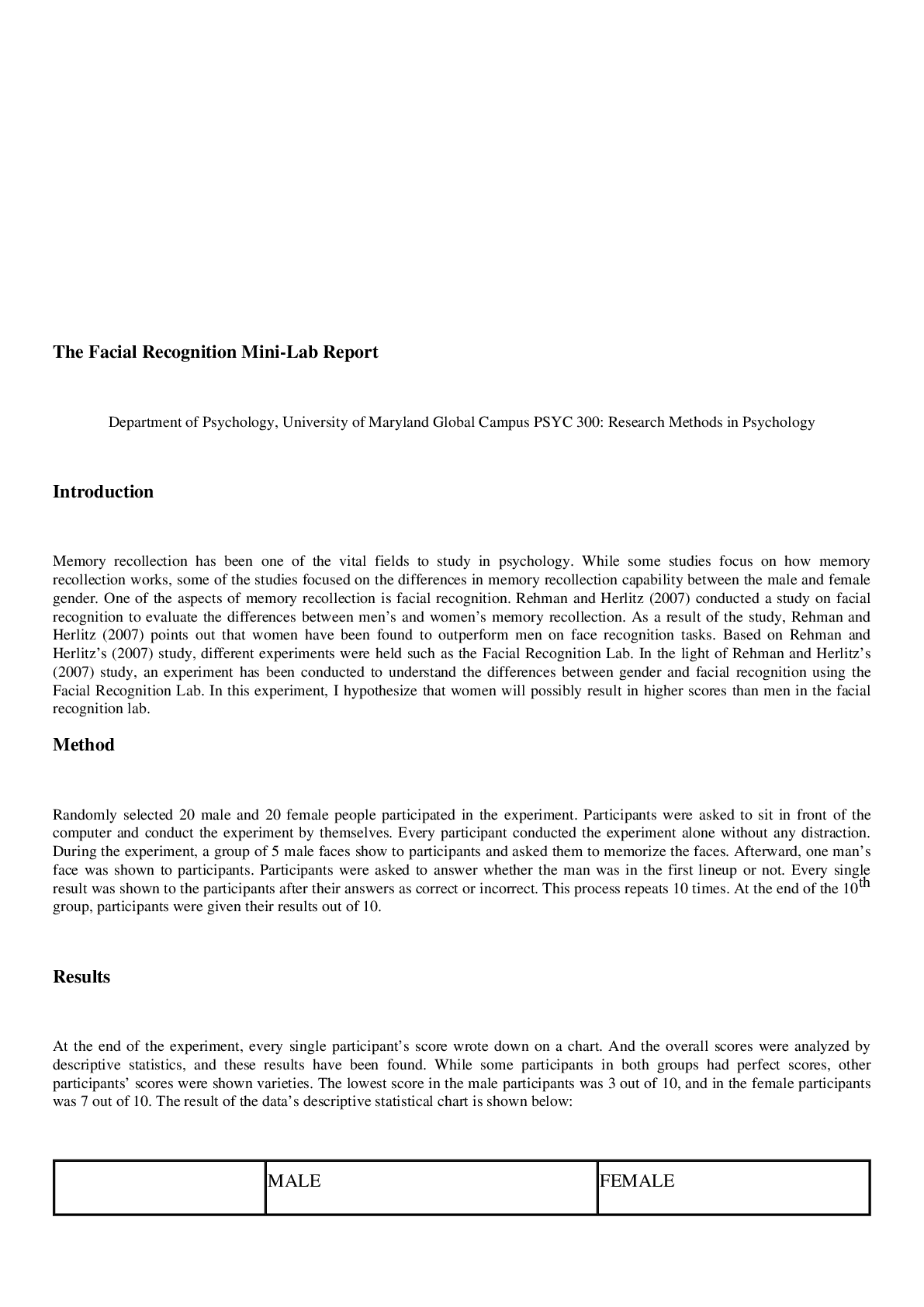
 (1).png)
